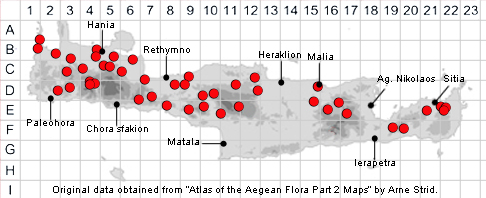RANUNCULUS NEAPOLITANUS
Family and Genus:- See- RANUNCULACEAE/Subgen. RANUNCULUS/Sect.
Common Names:- Bulbous buttercup
Homotypic Synonyms:- Ranunculus aleae, Ranunculus bulbosus ssp. aleae
Meaning:- Ranunculus (L) Little-frog, diminutive of rana, (reference to the water-
loving habit of many species).
Neapolitanus (L) From Naples, Italy.
General description:- Short-lived perennial without a rhizome but with a cluster of
slightly swollen, narrowly spindle-shaped roots 2-3.5 mm diam.
Stems:-
1) Erect, 20-45 cm tall.
Leaves:-
1) Basal,
a) petiole, 2-4 times as long as lamina, with long, erecto-patent hairs.
b) lamina, broadly triangular-ovate to suborbicular, 3-8 cm broad, pubescent, on
both surfaces, 3-partite to 60% or more;
c) middle lobe, cuneate-obovate, shallowly 3-lobed, dentate,
d) lateral lobes, asymmetrically 2-lobed and dentate.
2) Cauline, lowermost 1-2, similar to the basal, but short-petiolate or almost
subsessile the others bract-like.
Flowers:-
1) Usually 6-12.
2) Sepals, deflexed, often tinged pink, pilose, externally.
3) Petals, 10-14 mm, broadly obovate, rounded, bright yellow.
4) Fruiting pedicel, shallowly grooved or sulcate,
5) Receptacle, pilose, at least in the upper part.
Fruit:-
1) Achene;
a) head, broadly ovoid to globose.
b) body, c. 3 x 3 mm, obliquely sub-orbicular, compressed, keeled, smooth or
minutely pitted, dark brown with a greenish margin.
c) beak, c. 0.5 mm, triangular or curved, greenish.
Key features:-
1) Lowermost 1-2 cauline leaves similar to the basal ones but short-petiolate or
subsessile, the others bract-like.
3) Sepals, deflexed.
4) Receptacle, pilose, at least in the upper part.
5) Pedicels, sulcate.
6) Body of the achene, c. 3 x 3 mm, obliquely sub-orbicular, compressed, keeled,
smooth or minutely pitted, dark brown with a greenish margin; beak c. 0.5 mm,
triangular or curved, greenish.
Habitat:- Damp to wet meadows, seasonally wet places in scrubland vegetation,
olive groves, roadsides, ditches, edges of cultivated fields. 0-1000(-1600) m.
Distribution:- Throughout Greece. - Italy, Balkan Peninsula, through Anatolia to
Crimea, Cyprus and W Syria. Fairly widespread across Crete, but lacking in the
central region.
Flowering time:- Early Apr to mid-Mar.
Photos by:- Steve Lenton
SPECIES DESCRIPTION

